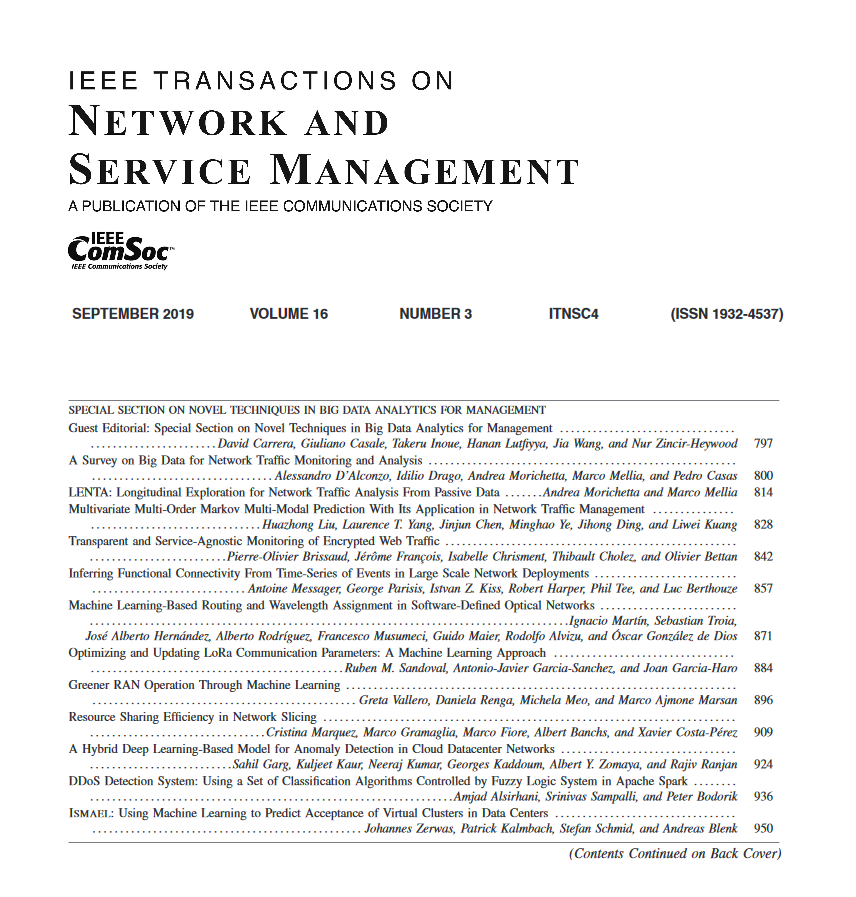支付渠道网络中的僵局预防
IF 4.7
2区 计算机科学
Q1 COMPUTER SCIENCE, INFORMATION SYSTEMS
IEEE Transactions on Network and Service Management
Pub Date : 2024-07-29
DOI:10.1109/TNSM.2024.3435484
引用次数: 0
摘要
在过去十年中,基于区块链的加密货币的使用大幅增加;然而,这些货币被更广泛地接受却受到扩展性挑战的阻碍。支付通道网络(PCN)作为第二层解决方案,是增强区块链网络可扩展性的可行选择。为了减少与链上结算相关的时间和成本,用户可以选择通过其网络内的支付渠道进行链下交易。PCN 的增长预计会伴随着交易数量的相应增加。然而,目前的分布式路由算法无法有效管理因死锁而同时发生的多个交易。我们说明了分布式路由算法中出现死锁的可能性。我们通过将 PCN 中的两个事务路由问题简化为双商品流问题,证明在 PCN 中路由两个事务是 NP-完全的。与早期通过利用锁定或优先队列来避免死锁的工作不同,我们的工作强调通过路由算法来避免死锁条件。我们改进了路由选择,以尽量减少可能导致死锁的饱和链接数量。我们使用资源分配图来说明事务陷入僵局所需的必要条件和充分条件。我们还展示了资源的动态行为如何影响未来时间戳的死锁情况。我们还讨论了死锁三难以及并发、资源和死锁之间的关系。实验评估表明,所提出的方法使 Speedy 算法和 Webflow 算法的事务计数分别提高了 41% 和 27%。本文章由计算机程序翻译,如有差异,请以英文原文为准。
Deadlock Prevention in Payment Channel Networks
The use of blockchain-based cryptocurrencies has significantly increased over the last ten years; nevertheless, the broader acceptance of these currencies is hindered by scaling challenges. Payment Channel Networks (PCN), which operates as a layer two solution, presents itself as a viable option for augmenting the scalability of a blockchain network. In order to reduce the time and cost associated with the on-chain settlement, users have the option to conduct off-chain transactions through payment channels within their network. The growth of the PCN is expected to be accompanied by a corresponding increase in the number of transactions. However, the current distributed routing algorithms are unable to manage several simultaneous transactions due to deadlocks efficiently. We illustrate the possibility of deadlock in distributed routing algorithms. We prove that routing two transactions in PCN is NP-complete by reducing it from a two-commodity flow problem. In contrast to earlier work that avoided deadlock by exploiting locking or priority queues, our work emphasizes routing algorithms to avoid conditions for deadlock. We enhance the routing choices to minimize the number of saturated links that can cause deadlock. Resource allocation graphs are used to illustrate the necessary and sufficient conditions required for transactions to be in a deadlock. We also show how the dynamic behavior of resources can affect the deadlock situation in future timestamps. The deadlock trilemma and the relation between concurrency, resources, and deadlocks have also been discussed. The experimental evaluation shows that the proposed methodology yields an improvement in transaction count in the Speedy and the Webflow algorithms by 41% and 27%, respectively.
求助全文
通过发布文献求助,成功后即可免费获取论文全文。
去求助
来源期刊

IEEE Transactions on Network and Service Management
Computer Science-Computer Networks and Communications
CiteScore
9.30
自引率
15.10%
发文量
325
期刊介绍:
IEEE Transactions on Network and Service Management will publish (online only) peerreviewed archival quality papers that advance the state-of-the-art and practical applications of network and service management. Theoretical research contributions (presenting new concepts and techniques) and applied contributions (reporting on experiences and experiments with actual systems) will be encouraged. These transactions will focus on the key technical issues related to: Management Models, Architectures and Frameworks; Service Provisioning, Reliability and Quality Assurance; Management Functions; Enabling Technologies; Information and Communication Models; Policies; Applications and Case Studies; Emerging Technologies and Standards.
 求助内容:
求助内容: 应助结果提醒方式:
应助结果提醒方式:


